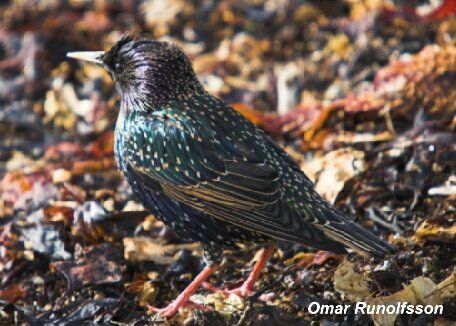
Free birdwatching magazine and guide to finding birds
Starlings and Orioles
-
Tristram's Grackle
Managing Director
Find out more -
Common Starling
Director
Find out more -
Spotless Starling
Marketing Manager
Find out more -
Rose-coloured Starling
Marketing Manager
Find out more -
Golden Oriole
Find out more
Starlings and Mynas
SA comprehensive illustrated guide to the Old World family of birds in the HELM IDENTIFICATION series. The Indo-Malayan and Afro-tropical varieties are covered, along with the New World immigrants, and the text together with drawings, maps and photographs show aspects of bird behaviour, distribution and natural history.
The Golden Oriole
One of Britain's rarest breeding birds, the Golden Oriole is also one of its most charismatic. Females are a vivid green, while the males of this species are a stunning yellow and black, with an extraordinary and unforgettable song. A long-distance migrant, the orioles return to breed in early May at just a few sites, almost all of which are in Suffolk.
The Pinyon Jay
The complex breeding system of Pinyon jays, involving helpers at their nest, the bird's dependence on the seed of the Pinyon Pine and their highly developed food hoarding behaviour, provides the backdrop for a species monograph on this North American bird.
The Florida Scrub Jay: Demography of a Cooperative-Breeding Bird
Florida Scrub Jays are an excellent example of a cooperative-breeding species, in which adult birds often help raise offspring not their own. For more than a decade Glen E. Woolfenden and John W. Fitzpatrick studied a marked population of these birds in an attempt to establish a demographic base for understanding the phenomenon of "helping at the nest." By studying both population biology and behaviour, the authors found that habitat restraints, rather than kin selection, are the main source of the behaviour of Florida Scrub Jays: the goal of increasing the number of close relatives other than descendants in future generations is of relatively minor importance in their cooperative-breeding behaviour.
The Florida Scrub Jay lives only in the Florida oak scrub. All acceptable habitat is constantly filled with breeders. Each year about half of the pairs are assisted by one to several nonbreeding helpers. This book provides extensive data on fecundity, survivorship, relatedness, and dispersal to establish the demographic milieu and to address questions arising out of observed helping behaviour--whom, how, when, and why the helpers help.
The Starling
The European Starling is one of the most succcessful birds in the world.It lives in close association with man and has been spread around the world by man,yet it is a bird many people love to hate.The Starling is a garden bird,a woodland bird,a farm bird and in all these habitats it conflicts with man to some degree.But this broad adaptability extends to many aspects of the Starling's life and has undoubtedly contributed to its success.This book traces the developments of the Starling from an arboreal,largely fruit eating ancestor,probably in south-east Asia,to the ground-dwelling omnivorous bird that we see today.The theme that runs through the book is the species' extraordinary biological success:habitat choice,annual cycles,behaviour,breeding,feeding,flocking,and roosting are all discussed in terms of their contribution to the species' success.The attributes of the Starling which have led to it becoming so numerous and widespread are of considerable interest to ecologists,ethologists,and conservationists,as well as to ornithologists.
The Starling (Shire natural history)
- Publisher : Shire Publications; First Edition (1 July 1985)
- Language : English
- Paperback : 24 pages
- ISBN-10 : 0852637640
- ISBN-13 : 978-0852637647
- Dimensions : 21.01 x 15.01 x 0.23 cm
Please note that we receive many hundreds of e-mails weekly. We will try our best to respond to your enquiry as efficiently and quickly as possible. If your enquiry relates to reserve and birding site access, please contact the relevant organisation. Sick, injured or young birds to RSPCA.
Enquiries about the sale of used birding equipment or ornithology books should be sent to the contact below.
Thank you
Join our mailing list
Contact Us
We will get back to you as soon as possible
Please try again later





